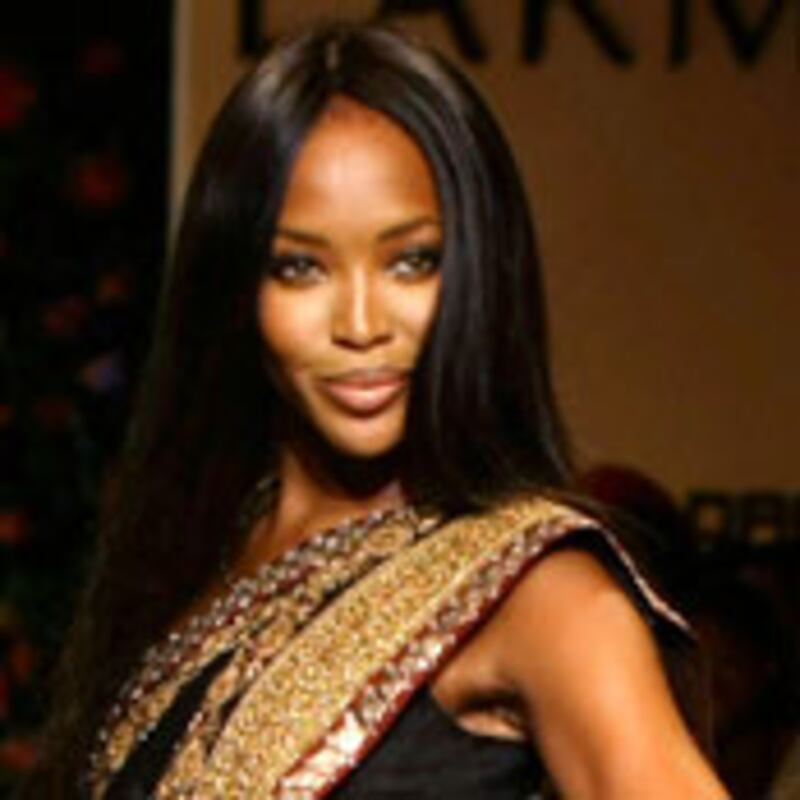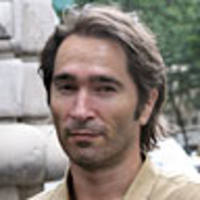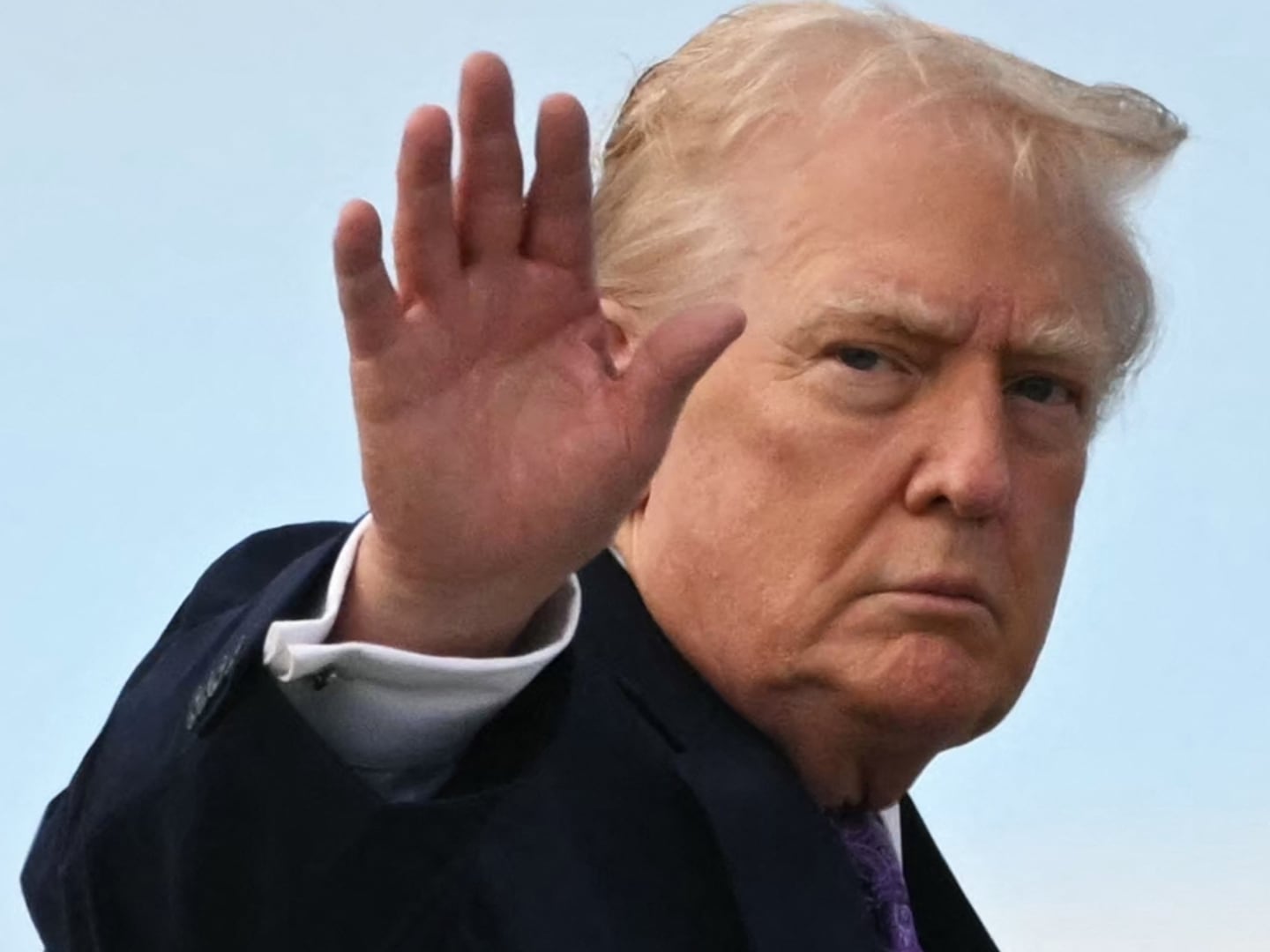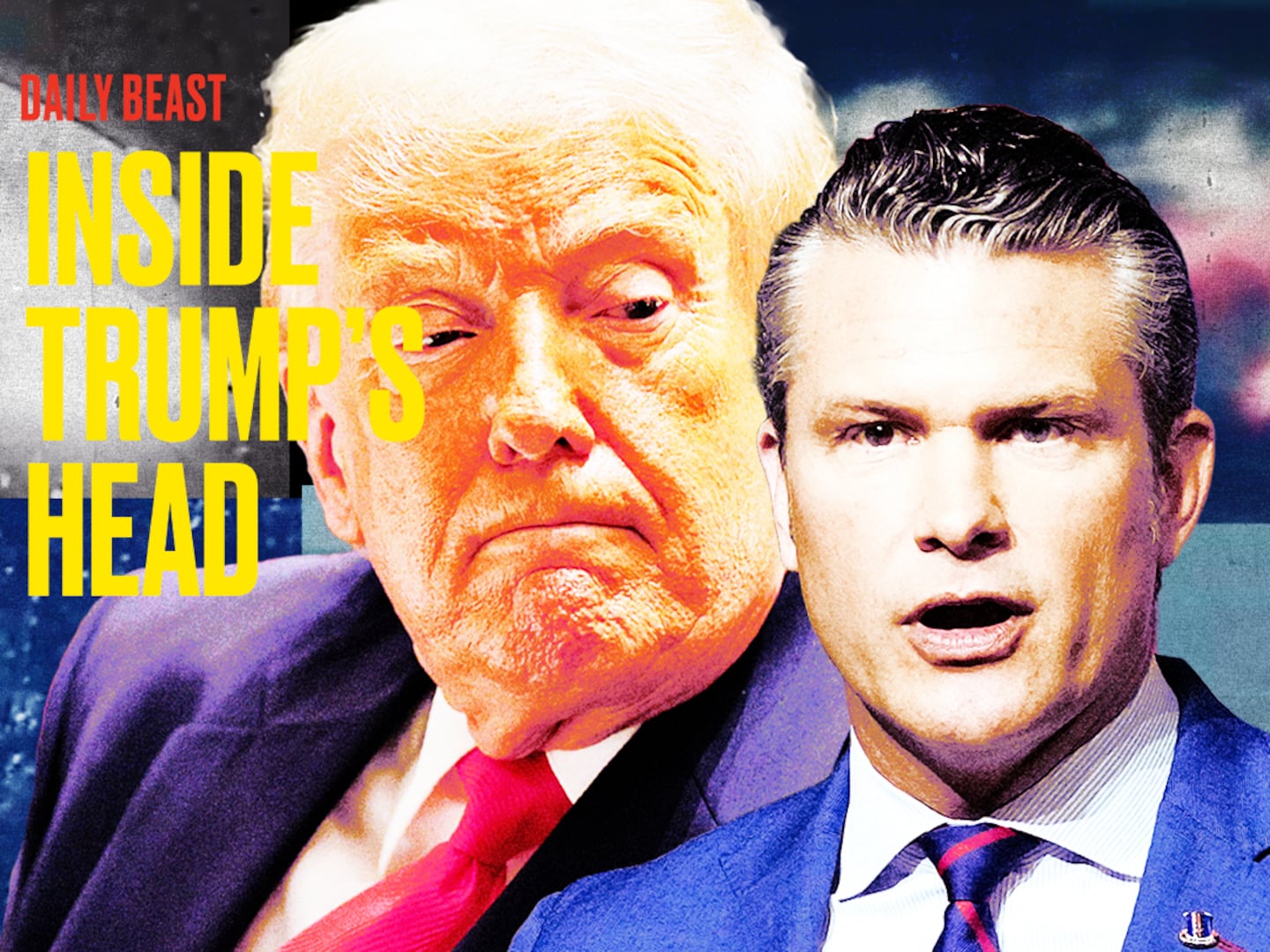
Why did Naomi Campbell knock down a camera and walk out of an ABC News interview last month when she was asked about receiving a large, raw diamond 13 years ago from former Liberian strongman Charles Taylor? The surprised supermodel awkwardly denied the gift or even dining alongside Taylor (despite a photo showing them together), and she is refusing to fully cooperate with prosecutors at his war crimes trial at the Hague.
Most reactions to the footage have emphasized past accounts of Campbell’s volatile behavior, while others have marveled at the surreal war crimes-related celebrity catfight between Campbell and actress Mia Farrow. It was Woody Allen’s ex who first linked the model to the “blood diamond” story, both on ABC and in a statement to the Special Court for Sierra Leone. Campbell, Farrow, Quincy Jones, and Taylor were among the guests at a 1997 charity dinner hosted by Nelson Mandela. Over breakfast the next morning, Farrow says she heard Campbell explain that Taylor’s intermediaries showed up at her door during the night and delivered the diamond.
“You don't forget when a girlfriend tells you she was given a huge diamond in the middle of the night,” says Mia Farrow.
The prosecution, whose case rested last year, will almost certainly have an opportunity to call rebuttal witnesses, and it must decide whether to press Campbell for a formal statement or even to ask her to testify. (If Campbell backed Farrow’s account under oath, it would circumstantially weaken Taylor’s own testimony given that he has told the court that he never owned, carried, trafficked or dealt with any diamonds, other than those embedded in his watches.)
It remains unclear how Campbell would respond to a subpoena, but given her surprising reaction to ABC News’s queries about her links to a man facing 11 counts of war crimes and crimes against humanity, it seems reasonable to assume that she might try to avoid appearing. Several legal figures close to the war crimes court told The Daily Beast that there could be a real enforceability problem if Campbell refused the subpoena. The court could contact Britain’s Foreign Office—Campbell is a U.K. citizen—to ask them to have Britain’s Home Office enforce the government’s pledge to support the court, but that would leave British legal authorities to decide how to move forward, and their course of action is far from clear.
Campbell’s lawyers could also fight pressure for her to appear, but the real question is, why would she decline? After all, why wouldn’t a woman who has been involved in an array of international philanthropic activities—she was taking part in a New York Fashion Week event for Haiti when ABC News surprised her with its line of questioning—simply offer to cooperate with a court that is going after war criminals who may have been responsible for tens of thousands of deaths and unspeakable atrocities?
Several figures linked to the court told The Daily Beast that among the hundreds of potential witnesses asked to testify against Taylor (with extensive guarantees for their safety, including some who testified by video hookup or from neighboring rooms), almost every single one of them did. A Sierra Leone war crimes court spokesperson said that he “didn’t know of anyone” who has refused. (One witness who failed to appear suffered a pulmonary embolism and died before he could.) Others have heroically testified about their own limbs being hacked off, watching helplessly as relatives were butchered before their eyes, or enduring particularly cruel gang rapes.
So why wouldn’t Campbell want to “step up,” as Mia Farrow called on her to? Only Campbell knows for sure, but a number of possibilities stand out. Greater awareness about how precious materials (oil, timber, gold, and stones) have fueled recent African conflicts—highlighted in the Leonardo DiCaprio movie Blood Diamond—has poisoned the glamour linked to some jewels. And Taylor has long been portrayed by journalists covering West Africa, and by prosecutors at the court, as Mr. Blood Diamond himself.
To be fair to Campbell, she was hardly the only high profile figure to interact with the Liberian dictator and, allegedly, enjoy his generosity. War crimes tribunal investigators repeatedly stumbled across accounts of Taylor using diamonds procured from neighboring Sierra Leone for power politics on a large and small scale, and particularly helpful visitors were sometimes said to leave his presence with a diamond in hand. (Among those who reportedly visited him, in some cases repeatedly, were Pat Robertson and Jesse Jackson.)
Campbell was hardly the only high profile figure to interact with the Liberian dictator and, allegedly, enjoy his generosity. Among those who reportedly visited him, in some cases repeatedly, were Pat Robertson and Jesse Jackson.
There are other potential reasons why Campbell may be reticent. If she brought a large and valuable diamond with her to the U.S. or the U.K., she would have been required to declare it at customs—and pay a substantial fee. If she did not, she would have been breaking an array of import-export laws and brought tax issues upon herself, given the likely value of the gift. (Depending on the timing of her movements with such a stone, she could even have been in violation of U.N. sanctions that made it illegal to cross borders with “conflict diamonds.”) As one American prosecutor experienced with such issues told The Daily Beast: “You just can't bring a big chunk of a rock into the country.” The potential fees, fines and interest, could be equal to or surpass the value of the rock itself. In other words, admitting that she received a large diamond from Taylor might cost Campbell tens of thousands of dollars or more.
Of course, there is also the possibility that Mia Farrow’s memory has misled her. After all, when Sierra Leone prosecutor Brenda Hollis argued, in cross-examining Taylor early this year, that the diamond he gave Campbell was part of a cache that he was selling or exchanging during his visit in South Africa for weapons to fuel the war, Taylor calmly replied that the account was “totally incorrect" and “total nonsense.”
Taylor’s defense attorney Courtenay Griffiths called Farrow’s account “third-hand hearsay,” and the court refused to permit Farrow’s statement to be used to cross-examine Taylor. Griffiths also noted during the trial that the person who could meaningfully discuss the alleged diamond gift is Naomi Campbell herself.
Farrow, though, is confident in her recollection. As she told ABC News: “That’s what happened; there’s no doubt in my mind…You don't forget when a girlfriend tells you she was given a huge diamond in the middle of the night.” While it is far from clear that Campbell still considers Farrow to be a “girlfriend,” the prosecution is now mulling whether to formally seek the supermodel’s testimony.
If they do, Campbell would be able to decide whether to step up and shine in a trial focusing on unimaginable crimes, or to let questions about whether she cares about justice drag on.
Eric Pape has reported on Europe and the Mediterranean region for Newsweek Magazine since 2003. He is co-author of the graphic novel Shake Girl, which was inspired by one of his articles. He has written for the Los Angeles Times magazine, Spin, Reader's Digest, Vibe, Courrier International, Salon, and Los Angeles from five continents. He is based in Paris. Follow him at twitter.com/ericpape.






